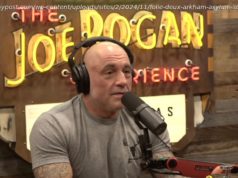Hike is part of a long-term program, with two more increases seen this year, as Fed seeks to return rates to pre-crash level
Last Updated Mar 15, 2017 3:45 PM EDT
The Federal Reserve raised its benchmark interest rate by a quarter percentage point Wednesday, part of a planned series of upcoming interest rate increases. The central bank’s program of gradually increasing short-term interest rates, if it continues, will increase what Americans pay on everything from home mortgages to credit cards.
“The simple message is that the economy is doing well,” Fed Chair Janet Yellen said in remarks after the announcement, underlining why the central bank sees it as a good time to increase rates. “We have confidence in the robustness of the economy and its resilience to shocks.”
The Fed’s benchmark, called the federal funds target rate, now climbs to a range of 0.75 to 1 percent.
The Federal Reserve announced Wednesday that it will raise a key interest by one-quarter of a percentage point. Rick Newman, columnist for Yahoo!…
No such clouds appear on the horizon today. “The way the economy is performing there would need to be some derailment for us not to see a multi-hike year,” said Myles Clouston, senior director at Nasdaq Advisory Services.
Yellen reiterated her stance that the Fed’s rate hikes would be “at a gradual pace.” This would proceed “over the next few years to sustain economic expansion,” she said.
The stock market resumed its rally after the rate-increase announcement, underscoring her optimism.
One reason the Fed raises short-term interest rates is to tamp down rising inflation, with the double-digit horror show in the 1970s as a prime example of what must be combated. Inflation in the wake of the Great Recession has not been a problem. If anything, the Fed wants to see it increase to a modest level, around 2 percent, which better greases the economy’s gears.
Inflation as measured by the Consumer Price Index is 2.5 percent, including food and oil, up a percentage point from a year before, although that’s still muted by historic standards.
“Inflation is getting hotter,” said Scott Colyer, chief executive of Advisors Asset Management in Monument, Colorado. “But it still hits the Fed’s just-right target. So the Fed will be tolerant of inflation and will let the economy run at higher rates.”
Indeed, the yield for the benchmark 10-year Treasury note, now 2.5 percent, is on the low end historically, which indicates not a lot of inflationary pressure.
Higher prices, in a modest way, are rippling through the economy. On Tuesday, the Producer Price Index — the cost of producing goods on the wholesale level — showed a yearly rise of 2.2 percent , which was higher than the consensus forecast.
“No wonder the Fed is suddenly more keen on normalizing policy,” wrote Ian Shepherdson, chief economist at Pantheon Macroeconomics, in a research note, meaning upping rates to more typical levels.
The question of when the economy hits “full employment” is important because it indicates a ceiling on how much further job growth is possible, although economists debate just how the jobless rate can go. The nation just had two strong back-to-back months of big job growth gains: 238,000 in January and 235,000 in February. President Donald Trump wants to boost that still more.
But the historically low number of the labor participation rate — 63 percent, down from 67 percent in eary 2000 — and slow wage growth suggest that slack remains in the labor market. To Ron Sanchez, chief investment officer of Fiduciary Trust Company International in New York, “These are Goldilocks numbers for the Fed.”
Here’s how the Fed’s action on Wednesday and those ahead could affect what consumers pay:
Mortgage rates are at their highest levels since October 2014. A 30-year fixed rate loan now averages 4.2 percent. About 56 percent of mortgage a…
The average 30-year mortgage is now at 4.4 percent, up from its recent low point of 3.5 percent in 2013. But since most homeowners keep their homes an average of seven years, before retiring the loan by selling the property, the mortgage rate tends to track the 10-year Treasury. The home loan rate usually is 1 to 1.5 percentage points more than the note’s yield because the government backs Treasury bonds. which are presumed to be safe from default.
The 10-year note now yields 2.6 percent. But in 2013, amid troubles with debt-laden European nations like Greece, it was only 2 percent, as investors worldwide flocked to safe U. S. government bonds, bidding up their prices (With bonds, prices and yields move in opposite directions.)
Adjustable rate mortgages are a different animal. Consider a popular adjustable called a 5/1 ARM, which means it is fixed for the first five years, then adjusts every year. The new rate is determined by a formula that relies on a mix of factors, but often short-term rates are key. Now, the average level is 3.6 percent. Fed hikes are bound to jack up the rates.
“These can sneak up and bite you,” said Greg McBride, chief financial analyst at Bankrate, a financial research firm.
The same is true for home equity lines of credit , which are loans secured by the borrowers’ equity in their dwellings — that is, the home’s market value after the mortgage debt is subtracted. HELOCs now run around 5.2 percent.
The stock market has surged 15 percent since the presidential election. President Trump’s address Tuesday night deepened optimism over his pro-bu…
And here is how higher rates could impact investors:
One thing is likely to change. As John Augustine, chief investment officer of Huntington National Bank, pointed out: “The Fed has been penalizing savers and rewarding borrowers” with low rates.” The Fed wants to flip that.






